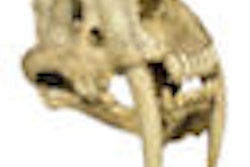
A team of Harvard University researchers has developed what they say is an easy-to-use classification system for evaluating individual teeth that could help standardize caries assessment, simplify treatment planning, and improve outcomes.
"Currently, there is no accepted comprehensive, standardized, and meaningful classification system for the evaluation of individual teeth that offers a common language for dental professionals," wrote Nachum Samet, D.M.D., and Anna Jotkowitz, B.D.S., of the Harvard School of Dental Medicine Department of Restorative Dentistry and Biomaterials Science, in Quintessence International (May 2009, Vol. 40:5, pp. 377-387). "The proposed classification aims to become a systematic tool that would enhance communication among dental professionals, be used for evaluation of cases from a medicolegal perspective, generate a baseline for outcome assessment of treatment modalities, and enable young and experienced clinicians alike to evaluate dental conditions in a uniform way."
The system “offers a useful tool to enhance communication and establish responsibilities among ... doctors and their patients.”
— William Wathen, D.M.D.,
Baylor College of Dentistry
The classification system could also facilitate patient understanding of the condition of their teeth, enabling them to make informed decisions before they consent to various treatment options, they added.
After reviewing the existing literature relating to classification and prognostication of individual teeth, Drs. Samet and Jotkowitz determined that the most important dimensions in tooth prognosis are periodontal, restorative, endodontic, and occlusal. Using this as a starting point, they set out to design a system that could assess the condition of individual teeth and attach a relative prognostic value to the teeth based on tooth condition and patient-level risk factors.
Noting that "the difficulty in attaching a prognostic value to individual teeth and predicting their survival has been well-documented," Dr. Samet and Dr. Jotkowitz's goal was not to determine an absolute prognostic value for individual teeth, "but rather to attach a relative prognostic value, which aims to enable clinicians to distinguish between favorable teeth and those that are compromised to a certain degree," they wrote.
Multiple patient-level factors can play a significant role in the prognosis of teeth, from biologic and environmental risks to financial and behavioral influences, the researchers added. "Each of these categories affects the progression of the disease, be it periodontal disease, caries, malocclusion, etc., and will influence the likelihood of recovery." And because only some risk factors can be diminished or eliminated, they need to be further divided into those that are modifiable and nonmodifiable.
This system "does not aim to allow for perfect differentiation among all potential situations," the authors wrote. "Rather, it includes those criteria that generally make a significant impact on the condition of a specific tooth and therefore on its relative prognostic value."
Five classes, four criteria, some caveats
Their classification system comprises four key criteria: periodontal condition and alveolar bone support, restorability (remaining sound tooth structure), endodontic condition, and occlusal plane and tooth position. It also includes two additional factors that may compromise these criteria: anatomic irregularities and iatrogenic compromising factors.
The system also specifies five classes: A, B, C, D, and X.
Classification system for single tooth assessment
|
The dentist then performs a three-step analysis:
Each tooth is evaluated for each of the four criteria. The severity level is evaluated based on the presented condition and with consideration to the foreseeable tooth status after caries removal. The single most severe of these criteria determines the tooth's class.
Anatomic risk factors -- such as irregularly shaped roots, multiple canals, and thin or short roots -- and/or iatrogenic compromising factors -- such as perforations, extensive post preparations, and dental materials that cannot be removed -- may result in a drop of a class for an individual tooth. More than two such findings in a tooth may require a further drop in class.
Patient-level risk factors may result in a decreased prognosis for the dentition. Therefore, a drop of one class for all teeth is suggested when considerable patient-level risk factors are diagnosed. Patient-level risk factors should be reassessed over time, and a decrease or increase in class should be considered when changes in modifiable risk factors are observed.
Preliminary evaluation of this classification system has been well-received, according to Drs. Samet and Jotkowitz. The system has been used by dental students at Harvard for the last few years, and "although they had no previous experience in evaluating teeth, they were able to attach realistic prognostic values to teeth more accurately and more promptly than their predecessors who did not use this classification," the authors wrote. The students were also able to devise "better and more appropriate" treatment plan options for their patients, they added.
"Samet and Jotkowitz have neatly captured and summarized both patient-based and pathology-based factors that affect clinical outcomes," said William Wathen, D.M.D., of the department of general dentistry at Baylor College of Dentistry. "Their proposal offers a useful tool to enhance communication and establish responsibilities among attending and consultant doctors and their patients. The risk factors they list are critical considerations and should be incorporated in every patient's assessment and treatment planning."
Copyright © 2009 DrBicuspid.com



















